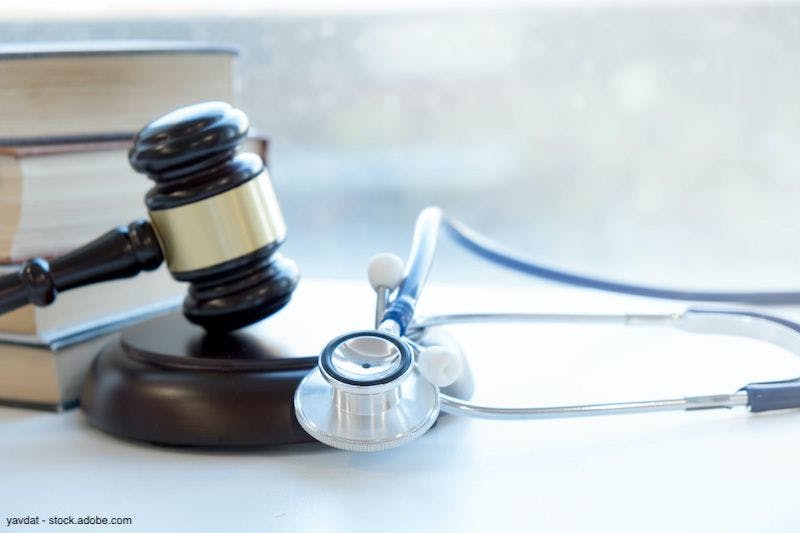Publication
Article
Urology Times Journal
Intermittent catheterization: From medical procedure to patient-controlled process
Author(s):
In this installment of the Urology Times' 50th Anniversary Innovation Celebration, John Stoffel, MD, discusses the development of clean intermittent catheterization and how it has improved the care of patients with urologic conditions.
John Stoffel, MD

Urology Times® is celebrating its 50th anniversary in 2022. To mark the occasion, we are highlighting 50 of the top innovations and developments that have transformed the field of urology over the past 50 years. In this installment, John Stoffel, MD, discusses the development of clean intermittent catheterization and how it has improved the care of patients with urologic conditions. Dr. Stoffel is, a Professor of Urology, and Chief of the Division Neurourology & Pelvic Reconstruction in the Department of Urology at the University of Michigan in Ann Arbor.
Could you give an overview of the development of clean intermittent catheterization?
This is an important concept in urology, and it has a long history. Intermittent catheterization, or draining in the bladder, dates back 3000 years. There are recorded instances in Egyptian medicine. The word catheter comes from the Greek and means to let down. In the past, men used rolled up leaves or hollowed-out pieces of wood to be able to drain their bladder. So there's a long history of catheterization. There's even a little bit of science behind it; in the 11th century, people recognized the difficulty of passing a rigid object, and they started to mold catheters out of silver, because they were malleable and they were able to be inserted into the bladder. So this is not a brand-new concept. Catheterization was even a fashion statement in 1700s England, in which hats were made with wide brims that you could hide a catheter in.
Specifically, though, where the change starts to come about is that people always recognize the danger of passing something per urethra, and there's a long history of people injuring themselves with these homemade or carved catheters. There was also the concern for infection as microbiology became a more prominent science. The first big change really came post World War 2 with Professor Ludwig Guttmann[, MD], in England. He developed a spinal cord injury unit to take care of people who had been injured. In this unit, they developed the concept of sterile intermittent catheterization. This was a game changer for people, that the bladder needed to be emptied regularly. It was looked at as more of a medical procedure in which the bladder was drained with a catheter, but it was performed in a sterile fashion by medical professionals. That concept was very prevalent for a good 20 to 30 years.
The next real revolution came at University of Michigan, with Professor Jack Lapides[, MD]. His concept wasn't so much that the risk of bacteria was going to be the driving force of what's going to affect intermittent catheterization, but it was really more bladder distension that was causing the injury. His thought was that high volumes of urine, particularly in people who have compromised neurologic or muscular input into the bladder, it was that high volume that was going to be causing ischemia and damage and that also drove inflammation. Yes, bacteria is worrisome from an infection standpoint, but the driving element is really emptying the bladder regularly. So he began the concept of clean intermittent catheterization, to be performed with a non-sterile technique. It was widely derided initially. There was a lot of resistance to it, because it was taking a medical procedure out of the hands of medical specialists and placing it in the patient's hands. Lapides not only promoted this idea, but he also encouraged patients to learn how to do it, so that it was no longer an inpatient or a hospital procedure but an at-home home procedure. That was the revolution in how we manage intermittent catheterization because it really changed it more to a patient-controlled and patient-driven intervention rather than a medical procedure. And really, time has proven that while yes, there is risk of infection with intermittent catheterization, the prohibitive risk of infection from patients performing catheterization themselves has not been realized. Patients are able to do it safely. It really has opened up a world of independence for people who need to empty their bladder regularly. That's work we've been doing at the University of Michigan since Lapides. It has been carried on by Edward J. McGuire[, MD], who demonstrated the bacterial colonization of the urethra and the bladder vs a true infection with intermittent catheterization. We based a lot of our work looking at chronic urinary retention on some of Lapides' early work, with the idea that it's bladder volume that may be more dangerous than instrumenting per urethra.
What makes clean intermittent catheterization an innovation in urology?
Catheters themselves have also undergone innovation, such as rubberization. That made it so you can mold catheters. The first ones were not really well designed, and they broke down. It was Frederic Foley[, MD], who developed the modern catheter, which is the shape that we use now. They've really proved durable. The success of intermittent catheterization also strongly depends on having a catheter that works well. We use the same design essentially from the 1930s. Things have improved even further over the years; there have been different tips developed and coatings that make it even easier for patients and may reduce the risk of trauma. The marriage of Lapides' technique with evolving new technology has been wonderful and amazing for the care of people who have urinary retention, and particularly people who have neurologic issues with the bladder that prevent them from emptying.
How has the development of intermittent catheterization improved treatment of patients with urologic conditions?
Touching back on some of the earlier points, one of the main benefits of intermittent catheterization is that it allows people to be able to take control of their lives and empty their bladder, so that the bladder is not something that other people are taking care of; the bladder is actually something that they're able to manage on a time frame that allows them to continue to live their life. The bladder is not the only thing that's driving their quality of life. Urologists around the world work very hard to try to find this optimal volume and schedule for people, and there's a lot of work to do. People would much rather not use a catheter than use a catheter. Quality of life is affected to some degree, but I don't think it can be overstated that allowing somebody to be able to manage their bladder outside of the hospital in a safe and consistent environment really does allow people to engage in and participate in life the way they want to. That to me has really been the biggest advance really predicated on Lapides' work of allowing the bladder just to be something that people can manage in their own lives rather than having to need specific, involved medical care.
Dialysis is a good comparison. Dialysis needs to be done in an inpatient facility and is a life-saving procedure. But it also ties people to a specific intervention. Catheterization is the opposite of that; it's more like diabetes management where people are able to manage their blood sugar on a schedule and are able to participate in their care and invest in their own their own wellness. To me, that's been a phenomenal advance.
Is there anything else that you think our audience should know about this topic?
I think the next big revolution is going to be not only what's the optimal way to be able to empty somebody's bladder and minimize quality of life impact and reduce morbidity of infections, but also the resources used with catheterization. Right now, people use a single catheter and throw it away. The environmental burden is tremendous. And so I think that people are now looking at how can we still preserve the benefits of intermittent catheterization and continue to work towards improvement of life, but looking at it in a context that has less of an environmental footprint. Reusable catheters, catheters that people can clean or sterilize at home, and different coatings, are what's coming next.
Alternatively, there's also a lot of work being done to see if there are ways that we can make the bladder more functional. There have been great advances in neuromodulation for people with underactive bladder, and hopefully, you don't have to catheterize as much in the future. There have been great advances in bladder outlet surgeries that reduce morbidity and allow fewer people to need catheterization. The field continues to evolve. I still think there will always be some role for intermittent catheterization, and it's our need and duty to keep studying it and make it as safe and as effective—and with the smallest environmental footprint —as possible.





























